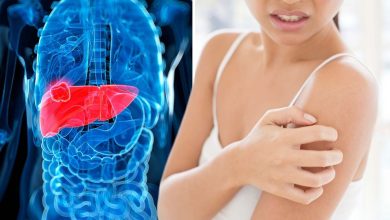15 Subtle Symptoms of Type 2 Diabetes Doctors Wish You Knew Earlier

Diabetes is a serious and life-changing condition that affects millions of people around the world. According to the International Diabetes Federation, approximately 463 million adults aged 20-79 years had diabetes in 2019, and this number is expected to rise to 700 million by 2045. Type 2 diabetes is the most common type of diabetes, accounting for around 90-95% of all cases. While many people are familiar with the classic symptoms of diabetes, such as frequent urination, excessive thirst, and fatigue, there are also a number of subtle symptoms that can be easy to overlook. In this article, we will explore 15 subtle symptoms of type 2 diabetes that doctors wish you knew earlier.
What is Type 2 Diabetes?
Type 2 diabetes is a chronic condition that affects the way your body processes blood sugar (glucose). When you have type 2 diabetes, your body either resists the effects of insulin, a hormone that regulates blood sugar, or doesn’t produce enough insulin to maintain normal blood sugar levels. This can lead to a number of serious health problems, including heart disease, stroke, kidney disease, nerve damage, and blindness.
Common Symptoms of Type 2 Diabetes
The classic symptoms of type 2 diabetes include:
- Frequent urination
- Excessive thirst
- Fatigue
- Blurred vision
- Slow healing of wounds
- Recurrent infections
- Numbness or tingling in hands and feet
If you experience any of these symptoms, it’s important to see your doctor for a blood sugar test. However, there are also a number of subtle symptoms that can be easy to overlook.
Subtle Symptoms of Type 2 Diabetes
Blurred Vision
While blurred vision is a classic symptom of diabetes, it can also be a subtle symptom that is easy to overlook. If you notice that your vision is suddenly blurry, or that you have difficulty focusing on objects, it’s important to get your eyes checked.
Skin Changes
People with type 2 diabetes are at higher risk for a number of skin conditions, including:
- Dry skin
- Itching
- Dark patches of skin
- Skin infections
- Slow healing of skin wounds
If you notice any changes in your skin, such as dryness, itching, or dark patches, it’s important to see your doctor.
Numbness or Tingling in Hands and Feet
Numbness or tingling in the hands and feet can be a sign of nerve damage, which is a common complication of type 2 diabetes. If you experience these symptoms, it’s important to see your doctor.
Recurrent Infections
People with type 2 diabetes are at higher risk for infections, including:
- Yeast infections
- Urinary tract infections
- Skin infections
- Gum infections
If you experience recurrent infections, it may be a sign of high blood sugar levels, which can weaken the immune system.
Slow Healing of Wounds
High blood sugar levels can also slow down the healing process, making it more difficult for wounds to heal. If you notice that your wounds are taking longer to heal than usual, it may be a sign of type 2 diabetes.
Sexual Dysfunction
Type 2 diabetes can also affect sexual function in both men and women. Men may experience erectile dysfunction, while women may experience vaginal dryness and difficulty achieving orgasm.
Unexplained Weight Loss
While many people with type 2 diabetes are overweight or obese, some may experience unexplained weight loss. This can be a sign that the body is not properly processing glucose.
Irritability
Changes in blood sugar levels can affect mood and lead to irritability or mood swings. If you notice that you are feeling more irritable than usual, it may be a sign of type 2 diabetes.
Fruity Breath Odor
If your breath has a fruity or sweet odor, it may be a sign of diabetic ketoacidosis, a serious complication of type 2 diabetes. This occurs when the body breaks down fat for energy, leading to the production of ketones.
Dry Mouth and Increased Thirst
Type 2 diabetes can cause dry mouth and increased thirst, which can be a result of high blood sugar levels. It’s important to drink plenty of water and see your doctor if you experience these symptoms.
Increased Appetite
While some people with type 2 diabetes may experience weight loss, others may have an increased appetite. This can be a sign that the body is not properly processing glucose.
Changes in Urination Habits
Changes in urination habits can be a sign of type 2 diabetes. This can include frequent urination, especially at night, or a strong urge to urinate.
Fatigue
Fatigue is a common symptom of many conditions, including type 2 diabetes. If you are feeling more tired than usual, it’s important to see your doctor for a blood sugar test.
Headaches
While headaches can have many different causes, they can also be a symptom of type 2 diabetes. If you experience frequent headaches, it’s important to see your doctor.
Difficulty Sleeping
Type 2 diabetes can also affect sleep patterns, leading to difficulty falling asleep or staying asleep. This can be a result of high blood sugar levels or other diabetes-related complications.
Conclusion
Type 2 diabetes is a serious and potentially life-threatening condition that affects millions of people around the world. While many people are familiar with the classic symptoms of diabetes, there are also a number of subtle symptoms that can be easy to overlook. If you experience any of these symptoms, it’s important to see your doctor for a blood sugar test.
FAQs
- What is the difference between type 1 and type 2 diabetes?
Type 1 diabetes is an autoimmune disorder in which the body’s immune system attacks the cells in the pancreas that produce insulin. This results in a complete lack of insulin production, and people with type 1 diabetes must take insulin injections or use an insulin pump to manage their blood sugar levels.
Type 2 diabetes, on the other hand, is a metabolic disorder that occurs when the body is unable to use insulin properly, resulting in high blood sugar levels. While type 2 diabetes can be managed with lifestyle changes and medication, some people may eventually require insulin therapy.
- Can type 2 diabetes be prevented?
While type 2 diabetes cannot always be prevented, there are steps you can take to reduce your risk of developing the condition. These include maintaining a healthy weight, eating a balanced diet, getting regular exercise, and quitting smoking.
- What are the risk factors for developing type 2 diabetes?
Some of the risk factors for developing type 2 diabetes include being overweight or obese, having a family history of diabetes, being over the age of 45, being physically inactive, and having high blood pressure or high cholesterol.
- What is diabetic ketoacidosis?
Diabetic ketoacidosis (DKA) is a serious complication of diabetes that occurs when the body produces high levels of ketones, a byproduct of the breakdown of fat for energy. DKA can be life-threatening and requires immediate medical attention.
- How is type 2 diabetes treated?
Type 2 diabetes can be managed with lifestyle changes such as diet and exercise, as well as medication. Some people with type 2 diabetes may eventually require insulin therapy. It’s important to work closely with your doctor to develop a treatment plan that is right for you.




